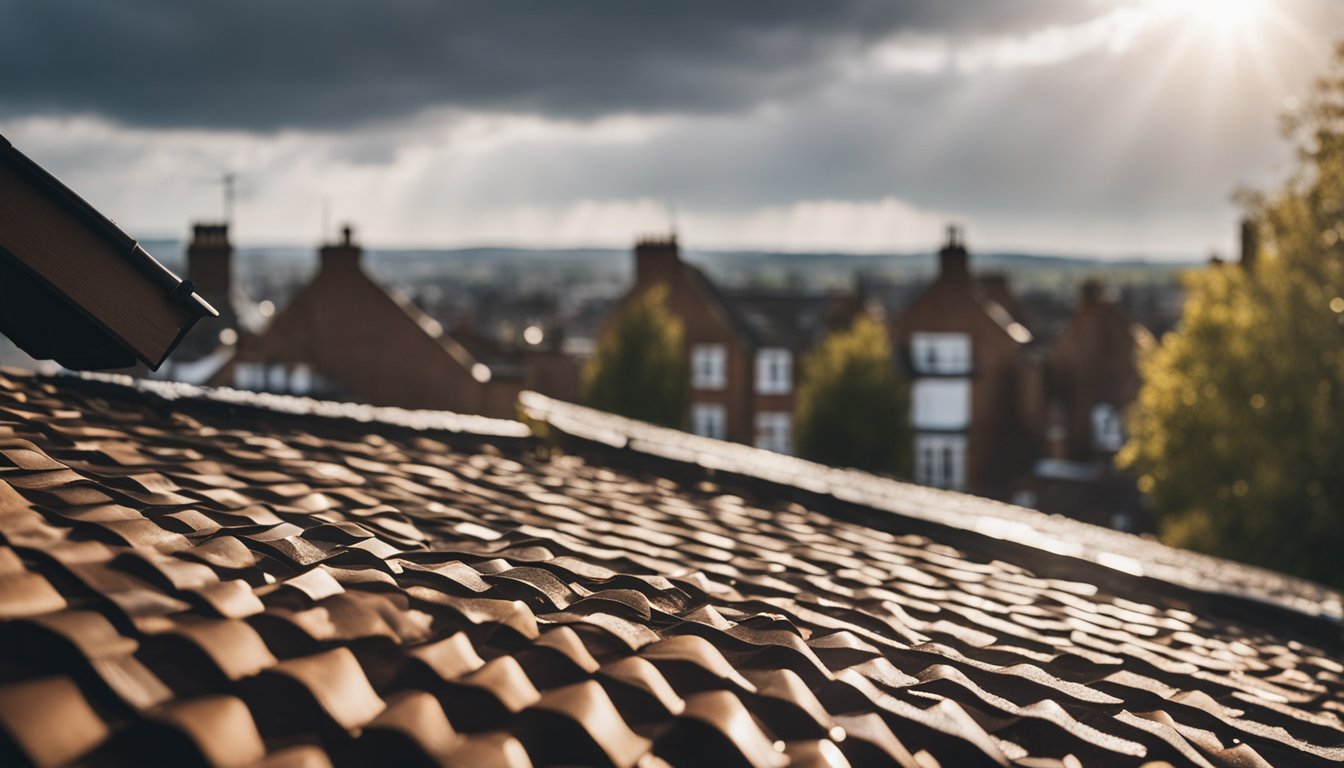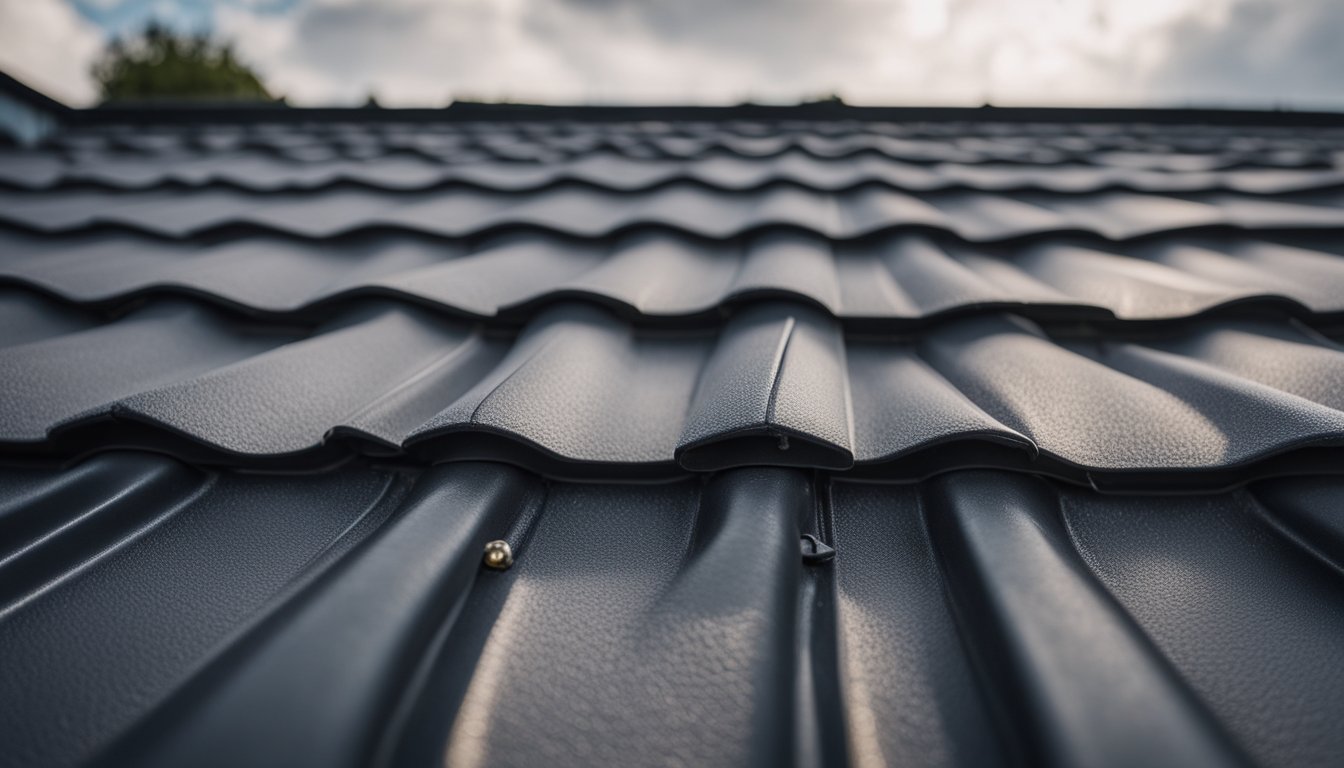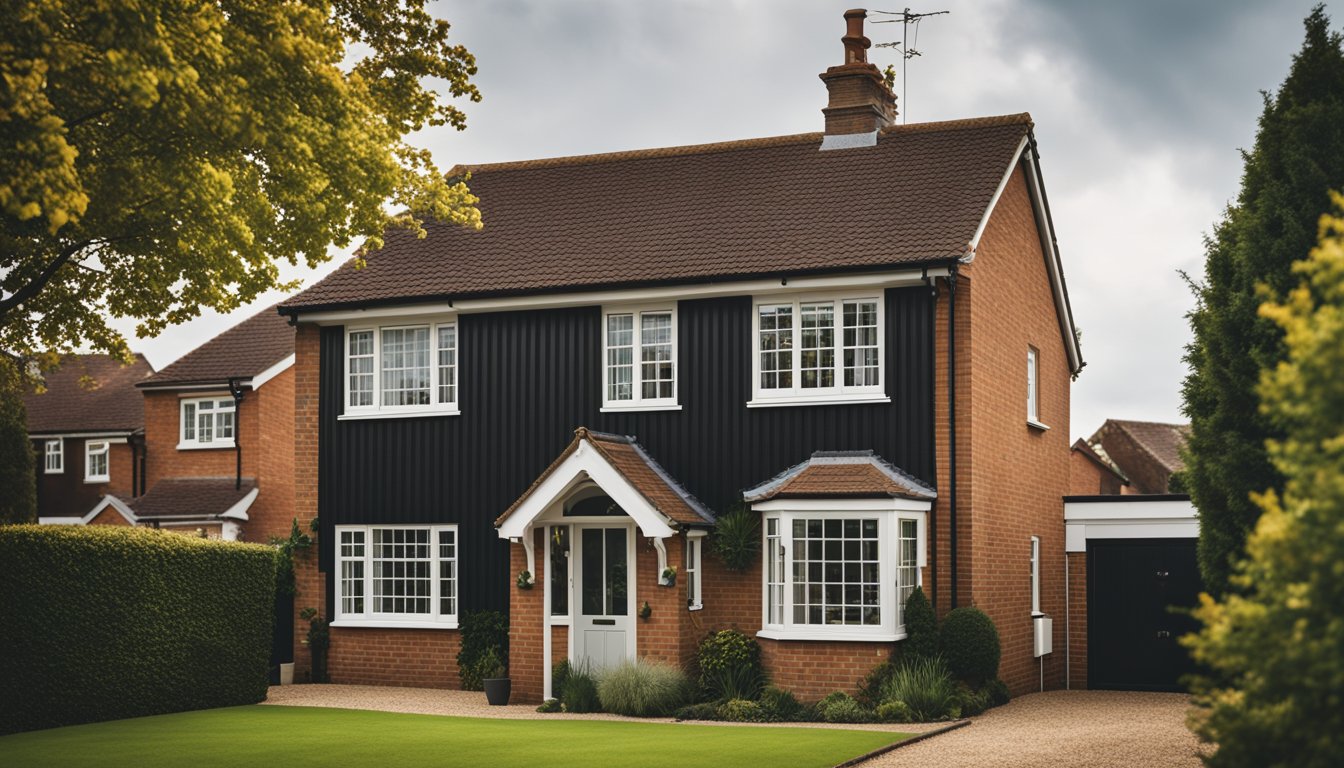Late updated: 21 Feb 2025 13:02
Written by: Oliver Bennett
Maximising Roof Longevity in Changing UK Climates: Essential Strategies for Homeowners
Navigating the challenge of maintaining roof longevity in the face of changing UK climates is essential for homeowners keen on preserving their property's value. A roof's lifespan varies significantly based on material, craftsmanship, and the harshness of local weather. Our priority should be to enhance our roof's resilience by combining robust maintenance strategies with environmentally friendly practices, effectively prolonging its durability.

We're aware that the UK's unpredictable climate poses unique challenges to roof preservation. Constant exposure to wind, rain, and temperature fluctuations can undermine even the most durable materials. Simple preventative measures and routine inspections can make a significant difference in safeguarding the roof's integrity.
Let's explore strategies to extend the lifespan of our roofs and optimise their performance. Our focus on innovative solutions and sustainable practices not only protects our homes but also contributes to energy efficiency. This approach ensures that we meet both current needs and future environmental expectations.
Key Takeaways
- Regular maintenance and timely repairs are vital for roof longevity.
- Understanding material characteristics aids in effective climate adaptation.
- Sustainable practices can enhance energy efficiency and resilience.
Assessing Roof Longevity Factors
When enhancing the lifespan of roofs in the UK, several crucial factors come into play. Local climate and weather patterns can significantly impact structural integrity. Selecting the right roofing materials is vital for enduring a wide range of British weather conditions. Lastly, the importance of proper installation cannot be overstated, as it determines overall performance and durability.
Local Climate and Weather Patterns
The British weather is notoriously unpredictable, with frequent heavy rainfall and fluctuating temperatures. Such variability tests the roof's resistance to moisture and its structural integrity. In areas with high winds, roofs may face additional strain, increasing the risk of damage.
Extreme weather conditions, like occasional storms, can challenge even the most durable materials. Solar radiation, while less intense than in other climates, still affects roofing systems over time, especially in regions with less cloud cover. Understanding these patterns helps us anticipate potential issues, enabling proactive measures to protect our roofs.
Choosing the Right Roofing Materials
The choice of materials impacts not just longevity but also insulation and energy efficiency. Asphalt shingles are popular due to their affordability; however, they typically last around 20 to 30 years. For more longevity, materials like metal roofs or slate roofing, which can last over 50 years, are preferred.
Concrete tiles provide good durability and resistance to harsh elements. In our current climate shift, considering green roofs or cool roofs can offer advantages due to their ability to regulate temperatures and manage water. We must balance cost with long-term durability to select the best roofing solution for our homes.
Importance of Proper Installation
Installation quality directly affects the lifespan and performance of roofing systems. Engaging skilled roofing contractors ensures that both the materials and their installation meet high standards. This reduces the likelihood of leaks and structural flaws.
During installation, attention to detail, such as ensuring proper alignment and securing materials tightly, is crucial. Poor installation can lead to premature deterioration, negating the benefits of even the most resilient materials. By investing in professional craftsmanship, we can significantly enhance our roof's durability and resilience against challenging weather conditions.
Maintenance and Prevention Strategies

In the unpredictable UK climate, maximising roof longevity requires a strategic approach. Combining routine maintenance and innovative design helps mitigate issues arising from weather conditions. Integrating sustainability and energy efficiency into roofing further enhances durability.
Regular Inspections and Maintenance
Regular inspections are crucial for identifying potential issues before they evolve into major problems. Roof inspections should focus on assessing shingle integrity and structural issues. Missing or damaged materials can lead to water damage, so addressing these promptly is essential.
Incorporating dry-fix roofing accessories can enhance the roof's resilience by reducing maintenance needs. Metal roofing provides a durable option, resisting corrosion and weather wear. Regular roof maintenance, including cleaning gutters and removing debris, helps prevent moss growth, which can hold moisture and damage the roof.
Mitigating Damage Through Design
Roof design can greatly influence a roof's longevity. For pitched roofs, ensuring proper ventilation is vital, as it prevents overheating and excess moisture build-up. Design considerations should also include efficient water management to prevent flooding and leaks. This is especially important in urban heat island effect areas where intense weather variations can occur.
Roofing specification and material choice are critical. Using high-quality materials and following specification guidelines ensures durable construction. Russell Roof Tiles and similar makers provide solid options for all climates. By collaborating with architects and specifiers, we can ensure that new designs incorporate resilience against weather extremes.
Enhancing Sustainability and Energy Efficiency
Incorporating sustainability into roofing increases longevity while benefiting the environment. Green roofs are an excellent option, promoting biodiversity and reducing energy costs. They offer insulation to maintain comfortable indoor temperatures, lessening the reliance on heating and cooling systems.
Renewable energy, such as solar PV, can be integrated into roof designs to improve energy efficiency. This not only reduces energy bills but also contributes to a more sustainable future. By focusing on energy solutions, we help protect our environment while ensuring our roofs withstand the test of time.
By embracing these strategies, we can enhance the performance, durability, and efficiency of our roofs, providing long-term security for our homes in today's changing climate.
Frequently Asked Questions

Maintaining a roof in the UK requires attention to various factors, including regular maintenance and the use of specific materials to withstand changing climates. Knowing when to inspect and possibly renovate is also essential for prolonging roof life.
What are the best practices for maintaining roof durability in the UK's variable weather conditions?
Regular inspections and timely repairs are critical. Engaging professionals for yearly check-ups can help in detecting early signs of wear caused by rain, wind, or sun. Proper cleaning routines to remove debris and prevent moss growth also enhance longevity.
How can one extend the service life of a roofing system amidst the UK's climate changes?
Routine maintenance aids in identifying vulnerabilities before they escalate into significant issues. Implementing preventative measures such as sealants against water ingress and installing barriers against UV rays can help prolong service life.
What indicators suggest the need for roof renovation or replacement in United Kingdom homes?
Warning signs include persistent leaks, sagging, and visible deterioration like cracked tiles. Dark spots or trails on ceilings may also indicate water damage. When these are observed, an immediate assessment by a roofing professional is advisable.
Can regular maintenance prevent premature roof deterioration in the UK?
Yes, regular maintenance can significantly delay deterioration. Addressing small issues early keeps your roof's structure sound. Repairing cracks promptly and ensuring proper drainage are critical steps in maintaining a roof's integrity.
What materials are recommended for enhancing roof longevity in light of the UK's evolving climate?
Slate and clay tiles are highly durable and fare well in rainy conditions. Asphalt shingles with higher resistance ratings are also suitable. Choosing materials with good insulation properties can protect against temperature fluctuations.
At what age should a roof be inspected with a view to potential climate-related wear in the UK?
We recommend an inspection every five years for roofs older than a decade. This periodic check allows for the identification of any damage caused by climatic elements, offering an opportunity for preemptive repairs.
